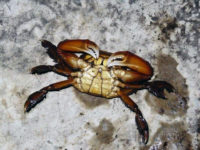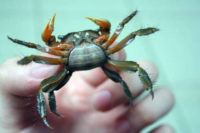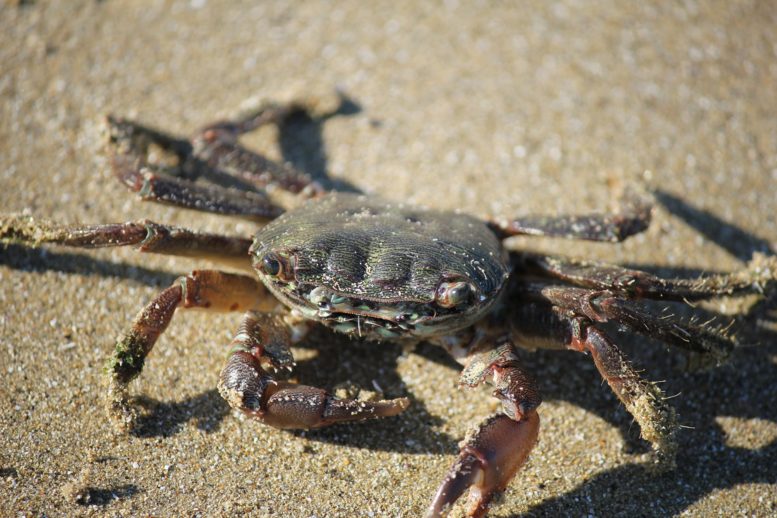The Talangka in the Philippines is from the scientific family Grapsidae and species Varuna litterata. Apart from the Philippines, Varuna litterata is also known to exist in Australia, China, Fiji, French Polynesia, Indonesia, Japan, Madagascar, Mauritius, Myanmar, Nansha (Spratly) Islands, New Caledonia, Palau, Papua New Guinea, Paracel Islands, South Africa, and Sri Lanka. The Varuna Litterata was named in 1798 by Johan Christian Fabricius, a Danish zoologist.
Genus Varuna (M. Edwards, 1830), has a single specie Varuna litterata (J. Fabricius, 1798), and is common in the Indo-Pacific region. It attracts attention by the marking on its carapace to which the specie’s name “litterata” refers. The capital letter H is formed by the lengthwise (longitudinal) grooves that separate the sides (lateral) of the crab, which hold the branchial chambers with gills, from the center (median), which holds the gastric region in the upper part, and cardiac region in the lower part of the median. The crosswise (transverse) groove of the letter H, therefore appears to form the upper boundary of the cardiac region (T.R.R. Stebbing, 1893) and the lower boundary of the gastric region of the median (T. Sakai, 1939).
The front margin of the crab is narrow and straight, and the shape of the anterior-lateral borders is convex, separated into three pointy teeth. The body color is brown-red, sometimes greenish. The size varies from 50-55 mm wide (J. Gerlach, 2011). Its eyes are small and short. The shell or carapace of Varuna litterata is rounded and quadrangular. The ambulatory legs are expanded, and their posterior is thickly fringed with hairs (ciliate), which are useful to the crab for swimming purposes (T. Sakai, 1939). Its long legs are used for running, swimming, jumping, climbing or burrowing (Nandi & Pramanik, 1994).
Varuna litterata is usually found in mangroves, estuarine and freshwater environments, shallow sub-tidal regions, coastal waters or riverbanks that are 5-50 mm deep, and often hiding under rocks, logs, and dead leaves. It lives in burrows along the embankments or sides of pools, creeks and shallow banks (Devi et al., 2013). ). A mass migration of this species is rarely seen (P. Ryan, 2000). Its low population is tracked annually yet no IUCN Redlist assessment has been done in the Philippines.
When the reproduction period starts, which is at the beginning of the wet season, the adults all meet at the riverbanks, on the coast, or the estuaries. After hatching, their larvae are carried to sea by the currents. Varuna litterata is a phytophage, meaning it feeds mostly on plants, including diatoms or algae. Perhaps we could introduce the Talangka to the Pasig River so they can get a helping of the flourishing algae, and help clean up the river. This crab can have a lifespan of about 3 years if not over-harvested. But to increase its population, perhaps the pregnant crabs should be returned back until the population surges again.

Male Crab

Female crab
The Asian Shore Crab or River Crab is called Talangka in the Philippines. “Taba ng Talangka” refers to crab roe or “aligue” sack, which is attached to the female crab on its bottom (ventral) side. This is a delicacy In the Philippines. Thus, the female crabs are preferred over the male crabs because they almost always have “aligue,” the most flavorful part of the crab. While the Tagalogs call it Talangka, the Hiligaynons call it Katang, and the Cebuanos call it Kalampay.
In 2010, the Fisheries Administrative Order 233 Annex A released by the Bureau of Fisheries and Aquatic Resources (BFAR) listed Varuna litterata as an important aquatic organism for Food purposes.
